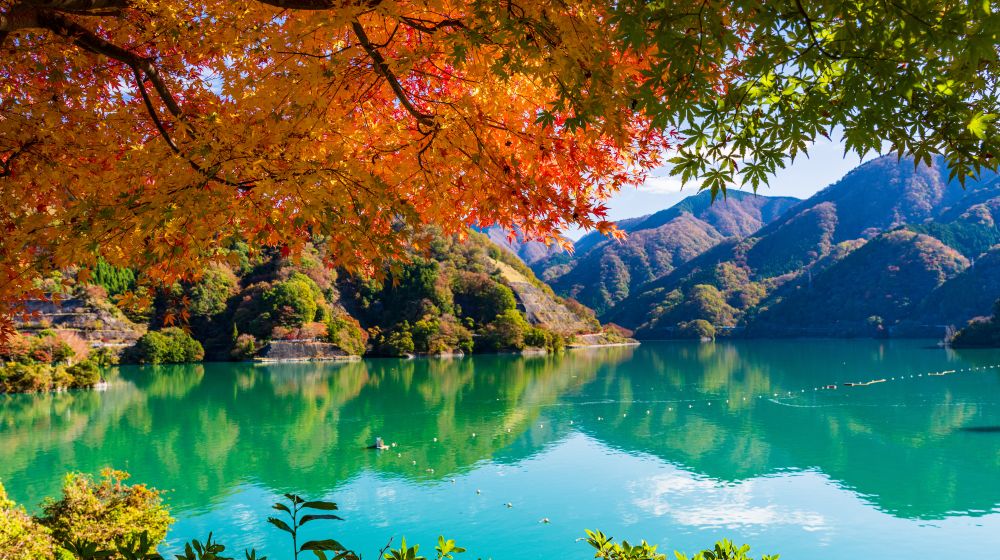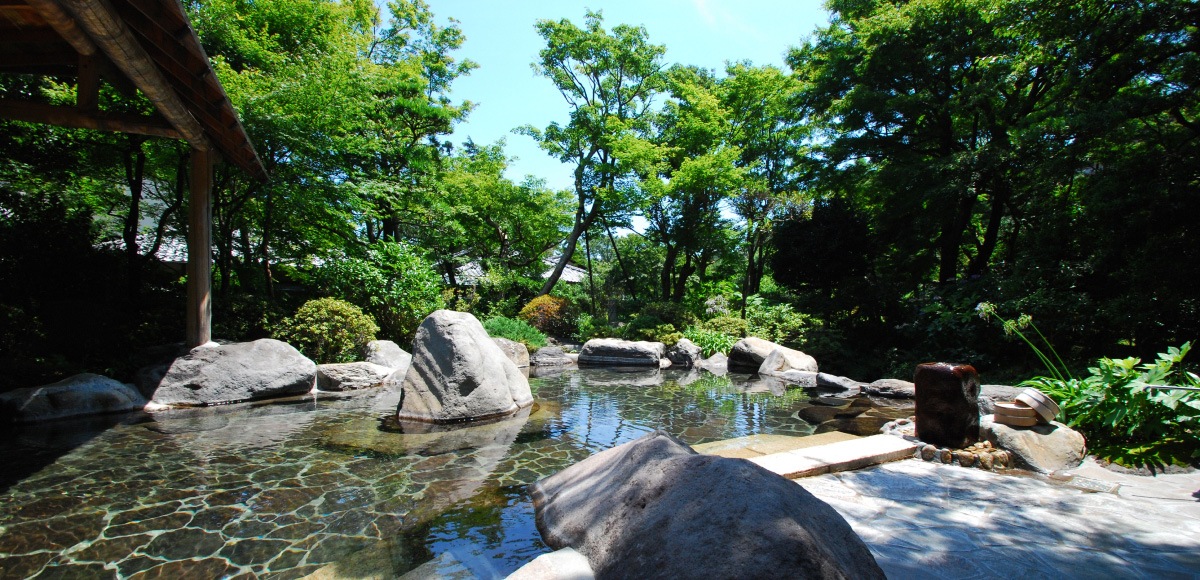
Yoshiike ryokan
Hakone Onsen
Kanagawa
Now is the time to experience real natural onsen
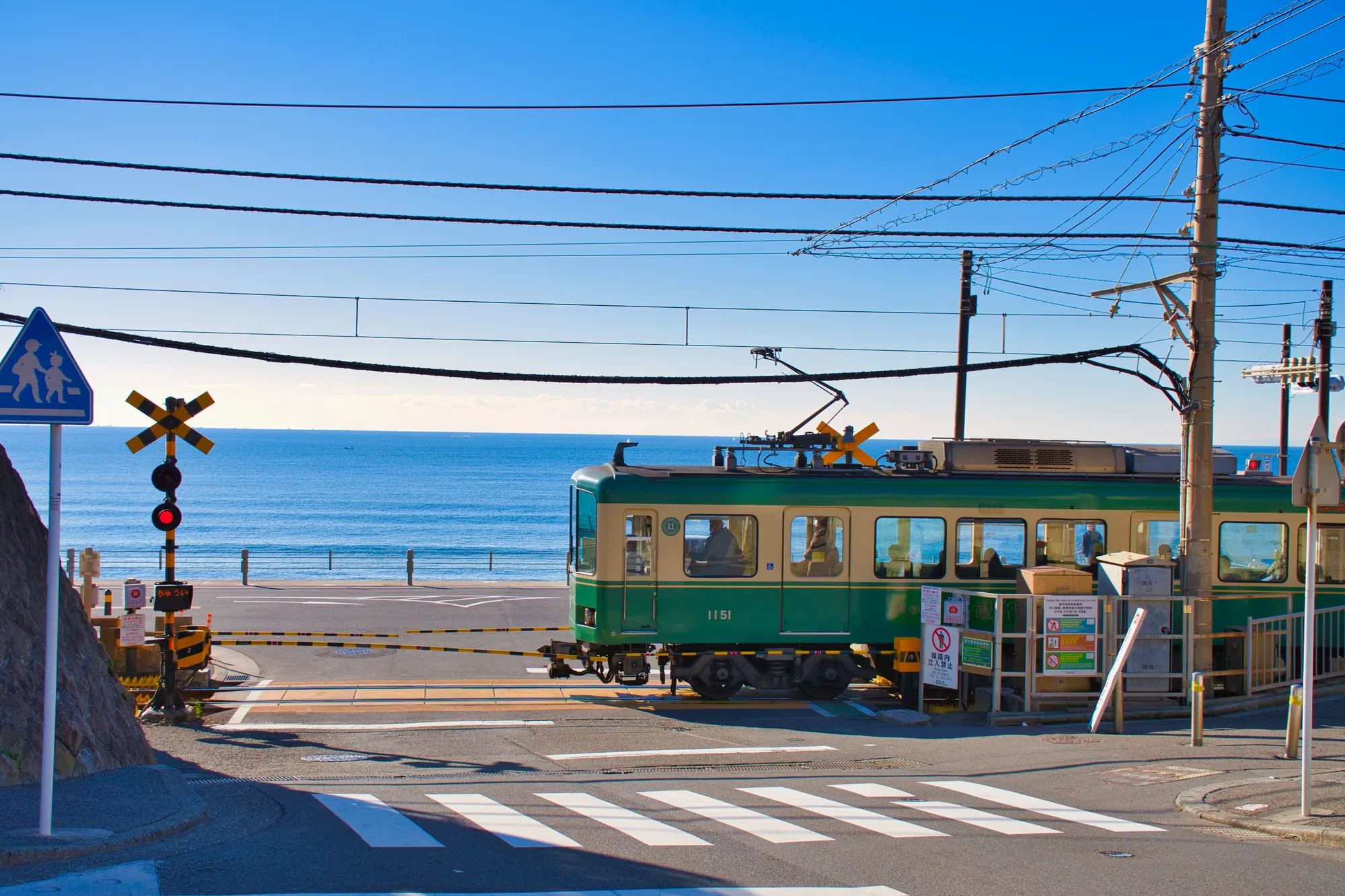

Kanagawa Prefecture is adjacent to the south of the capital city of Tokyo and has three ordinance-designated cities: Yokohama, Kawasaki, and Sagamihara. The southern side of the prefecture faces the Pacific Ocean, and it is an important and prosperous prefecture with ports that played a major role in the history of Japan, such as Yokohama, Yokosuka, and Kawasaki, as well as the rich fishing ports of Manazuru and Oiso.
Although it is located in the Tokyo metropolitan area, there is a lot of nature such as the sea, mountains, and lakes, and due to its blessed access conditions, there are many places and facilities where you can enjoy leisure on holidays.
One of the major attractions is that you can see Mt. Fuji, the tallest and most beautiful mountain in Japan and an object of worship, from Kanagawa Prefecture.
It is one of the prefectures with many attractive parts compared to other prefectures in Japan, with a good balance between the city with its well-developed transportation and infrastructure and the rich and beautiful nature.
There are many routes to Kanagawa Prefecture because it is adjacent to Tokyo, and there are many ways to access it. There is no airport in the prefecture, but from Haneda Airport in Tokyo, you can travel to Yokohama on the Keikyu Line in about 40 minutes, and by limousine bus in the same time.
From Narita Airport, you can transfer between the Keisei Line and JR, or take a limousine bus in 1 1/2 to 2 hours. If you arrive in Yokohama, you can move to most places in the prefecture, and it can be said that it is a prefecture with convenient transportation.
Also, depending on the area you are visiting, it may be convenient to take the Shinkansen or JR limited express from Tokyo Station.
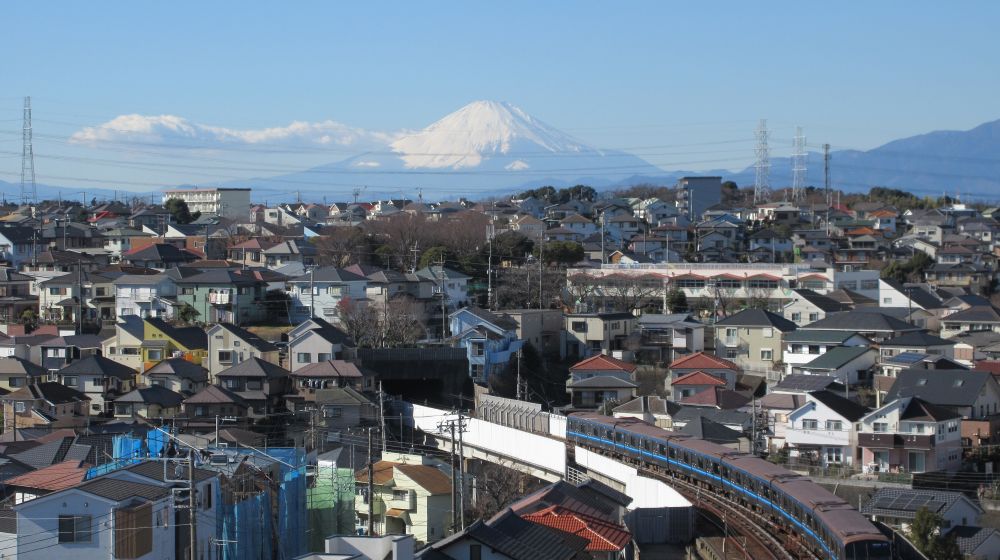
< train >
Tokyo Station (Ueno-Tokyo Line) → Yokohama Station (about 25 minutes)
< Bus >
Bus Terminal: Tokyo Yaesu→ Kisarazu Kaneda Bus Terminal→ Yokohama Station East Exit (about 1 hour 30 minutes)
< Shinkansen and train >
Nagoya Station (Tokaido / Sanyo Shinkansen) → Shin-Yokohama Station → Yokohama Station (about 1 hour 30 minutes)
< Airplanes and Buses>
Chubu Centrair International Airport→ Haneda Airport (limousine bus), →Yokohama City Air Terminal→ Yokohama Station (about 1 hour and 30 minutes)
< Shinkansen and subway >
Kyoto Station (Tokaido / Sanyo Shinkansen) → Shin-Yokohama Station (Blue Line) → Yokohama Station (about 2 hours 15 minutes)
< planes, trains and buses>
Kyoto Station→ Sannomiya→ Sannomiya (Kobe Shinkotsu Port Liner), Kobe Airport Station→→ Kobe Airport→ Haneda Airport→ Haneda Airport Terminal 1 (limousine bus→), Yokohama City Air Terminal→ Yokohama Station (about 3 hours)
Kanagawa Prefecture has been an area where people come and go since the time when the samurai regime was placed in Kamakura in the prefecture, and the highway leading to Kyoto passes through the prefecture.
During the Warring States period, the Hojo clan, which wielded power in Odawara, became even more prosperous and lively. Later, in the Edo period, the Tokaido, one of the five highways, was developed, and more people came and went.
Kanagawa Prefecture is such a prefecture, but there are several Onsen resorts scattered throughout the prefecture. Hakone, Yugawara, Nanasawa, Iiyama, Tsurumaki, Nakagawa, Shonan, Oiso, Tsunashima, and other most famous Onsen resorts have been home to inns since ancient times and have been popular with many people.
The Onsen resorts around Hakone along the Tokaido are called "Hakone Nanayu", and there are seven of them: Yumoto, Tonozawa, Dogashima, Miyanoshita, Sokokura, Kiga, and Ashinoyu. One of them, Tonozawa, is the Yumoto Kumano Shrine, which originated in Hakone Onsen and enshrines the oldest source in Hakone.
It is an ancient Onsen that is said to have been discovered by Shakujojobo in the Nara period, which dates back more than 1,200 years ago. Hakone has been loved by many famous historical figures and continues to give healing and joy to many people.
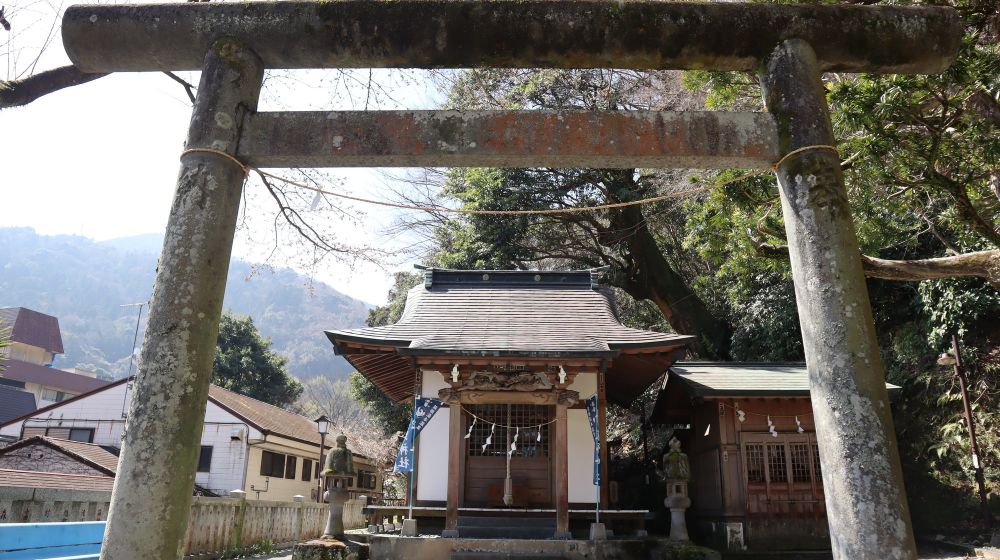
It is the most famous Onsen resort in Kanagawa Prefecture. As mentioned above in the history chapter, the area has been dotted with a number of famous Onsen resorts since ancient times. This area, which was called "Hakone Seven Onsens" in the Edo period, is now called "Hakone Seven Onsens" and has developed a new Onsen resort.
The name of Hakone is derived from the box-like shape of the outer ring mountain in this area, but the inside of the box has a rich forest and beautiful clear streams and lakes. And as one of the bounty of nature, Hakone produces 25,000 tons of hot water a day, and the amount of hot water that springs up is the fifth largest in Japan.
In addition, the quality of the springs is full of variety, and one of the attractions is that there are about 20 types. It may be a good idea to enjoy visiting several Onsens of different quality.
Hakone Onsen is one of the top Onsens in Japan, but it can be roughly divided into three areas: "Hakone Nanayu area (excluding Ashinoyu)", "Gora and Miyagino area", and "Lake Ashi area".
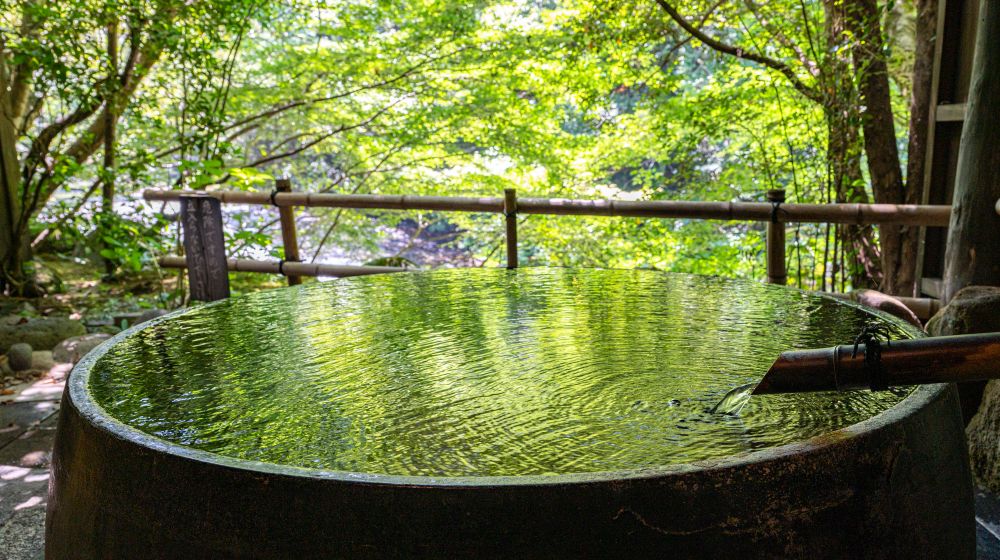
The first characteristic of the "Hakone Nanayu area (omitting Ashinoyu)" is the depth of history. It is a place where you can feel the atmosphere and the spirit of hospitality that has been passed down since ancient times.
Yumoto, which can be said to be the gateway, is the busiest with good access, and the old townscape remains, and in the shopping street, you can easily enjoy gourmet food and look around at crafts such as long-established restaurants and processed seafood stores.
If you go a little further into Tonozawa, Dogashima, Miyanoshita, Sokokura, Kiga, etc., you can spend a relaxing time at many long-established inns where you can feel the atmosphere and history.
There are many alkaline simple Onsens, and there are also simple Onsens, sodium chloride springs, sodium-calcium-chloride springs, and sulfate springs. It is said to be effective for neuralgia, muscle pain, joint pain, fatigue recovery, cold sensitivity, frozen shoulder, bruises, chronic digestive diseases, skin diseases, hemorrhoids, and beautiful skin.
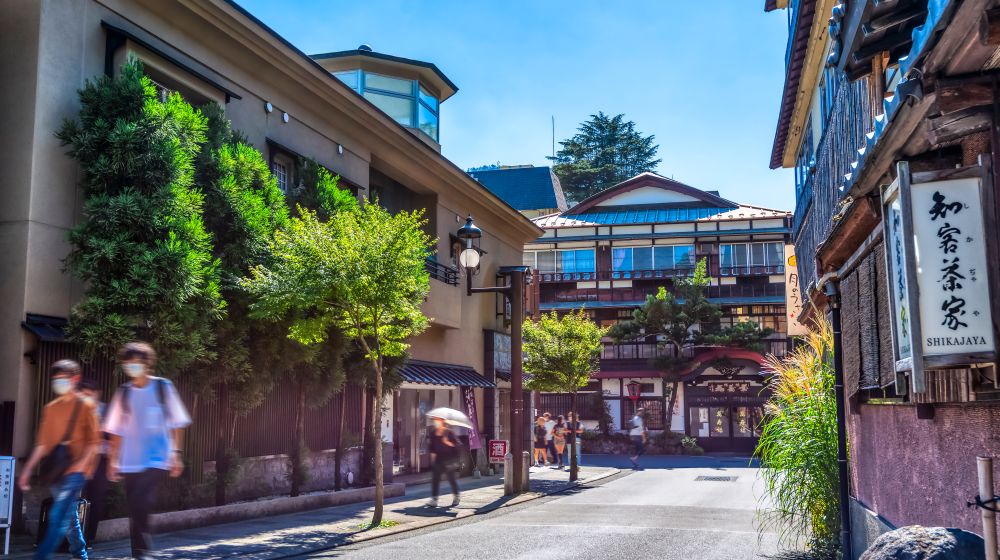
It is a place further into the "Gora, Miyagino area" and "Hakone Nanayu area". Since the beginning of the Meiji era, it has flourished mainly as a luxury villa area and a summer resort for literati and finance people, and these buildings were later transformed into inns, so it is characterized by a stylish atmosphere.
It is also a place to connect the Hakone Tozan Railway and the Hakone Tozan Cable Car, and there are many shops in front of Gora Station where you can enjoy gourmet food. Also, if you go to Miyagino, you can enjoy the cherry blossoms in spring with Yoshino cherry blossom trees along the Hayakawa River and drooping cherry blossom trees along the national highway.
There are a wide variety of Onsens, including simple Onsens, sodium-chloride springs, sodium-calcium-chloride springs, alkaline simple Onsens, and sulfate springs. It is said to be effective for neuralgia, muscle pain, joint pain, fatigue recovery, cold sensitivity, frozen shoulder, bruises, chronic digestive diseases, skin diseases, cuts, burns, hemorrhoids, and women's diseases.
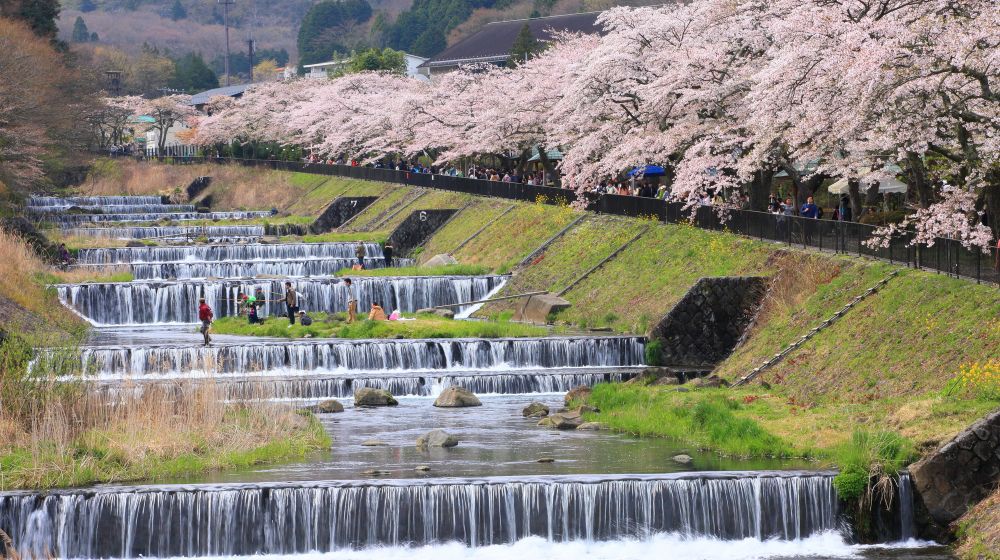
The "Lake Ashi area" is an area that includes Ashinoyu, which has been known as the Hakone Nanayu since the time of Edo, and the area extends to the area around Lake Ashi. Because it is a little deeper, among the Hakone Seven Onsens, Ashi no Yu was loved by many literati and ink customers who stayed for a long time.
Its quiet charm has been inherited as it is, and due to its characteristic of being a place rich in nature, it seems to be a place to heal the fatigue of customers who combine mountain climbing, hiking, camping, etc. in addition to conventional customers.
The quality of the springs is simple Onsens, simple sulfur Onsens, acidic sulfur-aluminum and iron, sulfate springs, acidic sulfur-aluminum, sulfate springs, calcium-sulfate springs, sulfate springs, etc. It is said to be effective for neuralgia, muscle pain, joint pain, fatigue recovery, cold sensitivity, frozen shoulder, bruises, chronic digestive diseases, skin diseases, cuts, burns, etc.
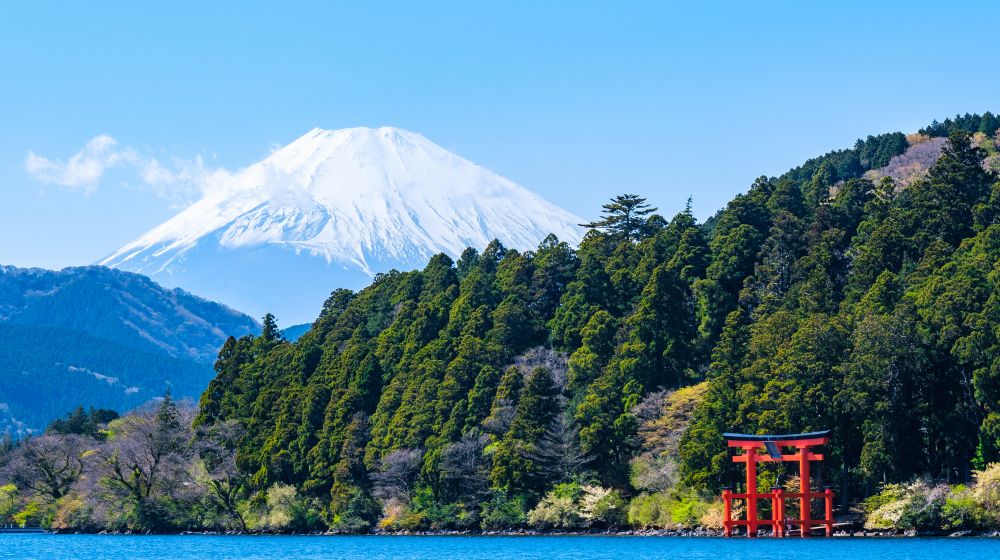
Yugawara Onsen, which is the second most famous Onsen in Kanagawa Prefecture after Hakone, is located along the JR Tokaido Line and is easily accessible, and can be visited in about an hour from Yokohama and about an hour from Tokyo by Shinkansen.
Yugawara also has a long history that is as old as Hakone Onsen.
There are various theories that Kaiyu is an actor, a gyoki, a kobo daishi, or a tanuki, but there is a song in the Manyoshu about the Onsens here in Yugawara, and it is said that it was already used by people as a Onsen resort 1200 to 1300 years ago.
Since the Kamakura period, it has healed the wounds and illnesses of the Bandō warriors, and in the Edo period, it was loved by people traveling on the Tokaido Highway, and was so popular that it was even selected as the third place in Edo's Onsen banzuke.
Since the Meiji era, it has been famous for being loved by literary giants, and it seems that people such as Doho Kunikida, Soseki Natsume, Ryunosuke Akutagawa, and Junichiro Tanizaki were inspired by visiting and spending time at Yugawara Onsen.
It seems that the atmosphere and hospitality that have been passed down since ancient times attract many people.
Most of the springs are sodium-calcium-chloride-sulfate springs, and there are five types of simple Onsens: calcium-sodium-sulfate-chloride springs, sodium-calcium-chloride springs, and calcium-sulfate springs. It is characterized by the presence of calcium components, and seems to have a particularly high warming effect on the body. It is said to be effective in such as Neuralgia, muscle pain, joint pain, fatigue recovery, sensitivity to cold, bruises, chronic digestive diseases, cuts, burns, arteriosclerosis, chronic skin diseases, chronic gynecological diseases, beautiful skin.
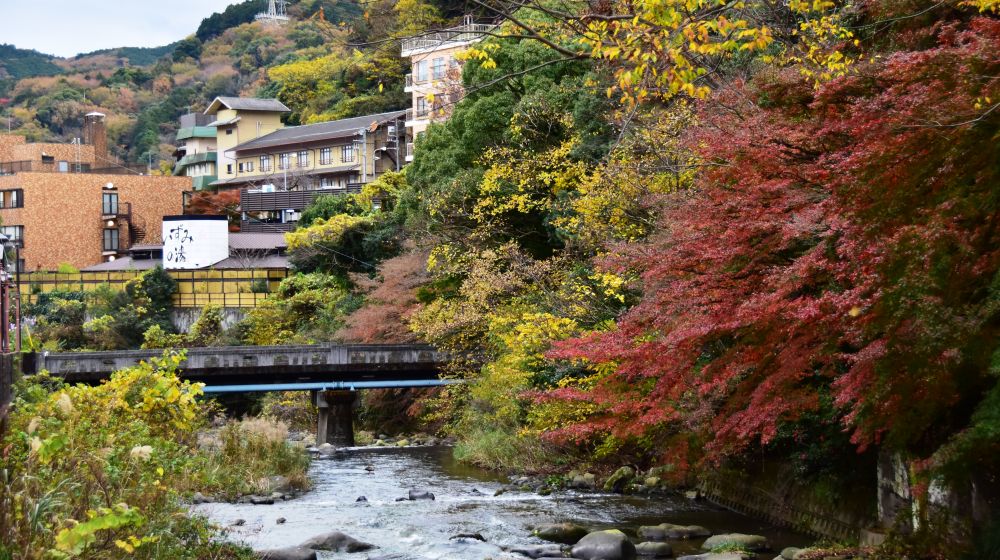
It is a Onsen resort that springs from the basement of Tanzawa and Oyama, which is known as a place for hiking, mountaineering, and camping that is easily accessible from Tokyo. It is a very popular Onsen resort in that it is a place that can be visited even on a day trip from the Tokyo metropolitan area of Atsugi City.
In the Edo period, 200,000 people visited Oyama annually from the town of Edo, which had a population of 1 million. On the way back from a major leisure activity that became an unprecedented boom, it is a Onsen that healed the fatigue of stylish Edo children, and here in Nanasawa and Iiyama Onsen, although it has been since the Edo period, it is a Onsen that has been popular with many ordinary people since ancient times.
In the Edo period, 200,000 people visited Oyama annually from the town of Edo, which had a population of 1 million. On the way back from a major leisure activity that became an unprecedented boom, it is a Onsen that healed the fatigue of stylish Edo children, and here in Nanasawa and Iiyama Onsen, although it has been since the Edo period, it is a Onsen that has been popular with many ordinary people since ancient times.
It is only a 25-minute bus ride from Atsugi Station, and you can easily stop by from Tokyo so easily that you can experience it in the Onsen area, and there are many facilities that accept day-trip bathing and day-trip bathing with lunch.
The quality of the spring is mainly alkaline simple Onsen, and it is said to be "hot water for beautiful skin" and has the characteristics of slightly thick water. It is said to be effective for skin-beautifying effects, neuralgia, muscle pain, joint pain, bruises, chronic digestive diseases, hemorrhoids, cold sensitivity, fatigue recovery, etc.
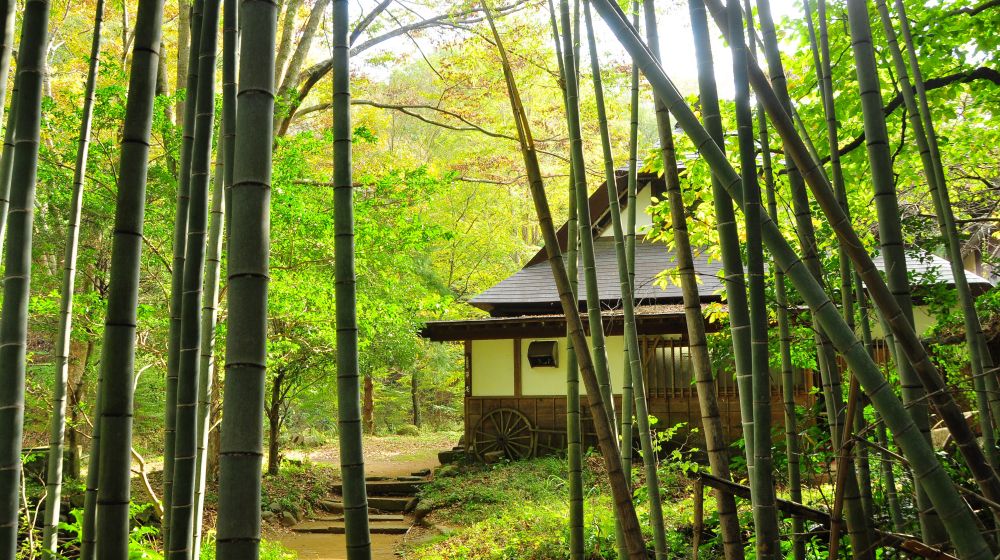
A Onsen resort that springs from the basement of Tanzawa and Oyama, which is the same as Nanasawa and Iiyama Onsen. It is a Onsen resort located on the west side of Tanzawa and Oyama, along the Nakagawa River in Yamakita Town, near the border of Yamanashi Prefecture.
Lake Tanzawa, which was created by the construction of a dam, is also nearby, and it is a Onsen resort in the midst of untouched nature, and it is a Onsen resort that can be described as a secret Onsen.
Nakagawa Onsen, which was touted as the "Onsen of beauty" in the secret Onsen of the famous general of the Sengoku period, Shingen Takeda, has a long history, and it is said that it healed the wounds of soldiers in the warring states. Because it is a place rich in nature, you can see many animals and birds such as deer, and it is a place where you can feel the tranquility of forgetting the hustle and bustle of the city.
Of course, there are inns and restaurants where you can enjoy plenty of gourmet food in the mountains, and you can encounter dishes that can only be tasted here, such as boar hot pot and river fish caught in mountain streams.
As it is said to be a secret Onsen, access is farther than other Onsen resorts in the prefecture, but it is a place worth visiting.
The quality of the spring is the same as that of Nanasawa and Iiyama Onsen, and it is mainly an alkaline simple Onsen, and it has a skin-beautifying effect that softens the skin with a thick texture as it is said to be a "beautiful Onsen". In addition, it is said to be effective for neuralgia, muscle pain, joint pain, bruises, chronic digestive diseases, hemorrhoids, cold sensitivity, and fatigue recovery.
